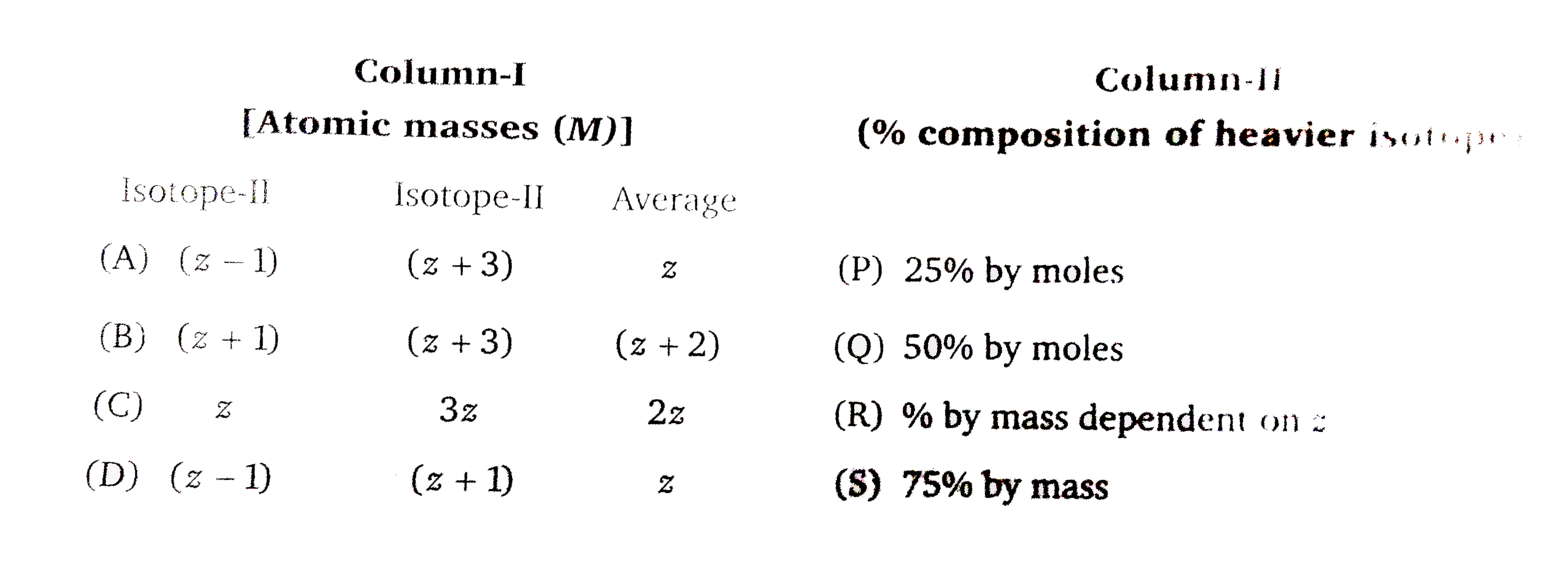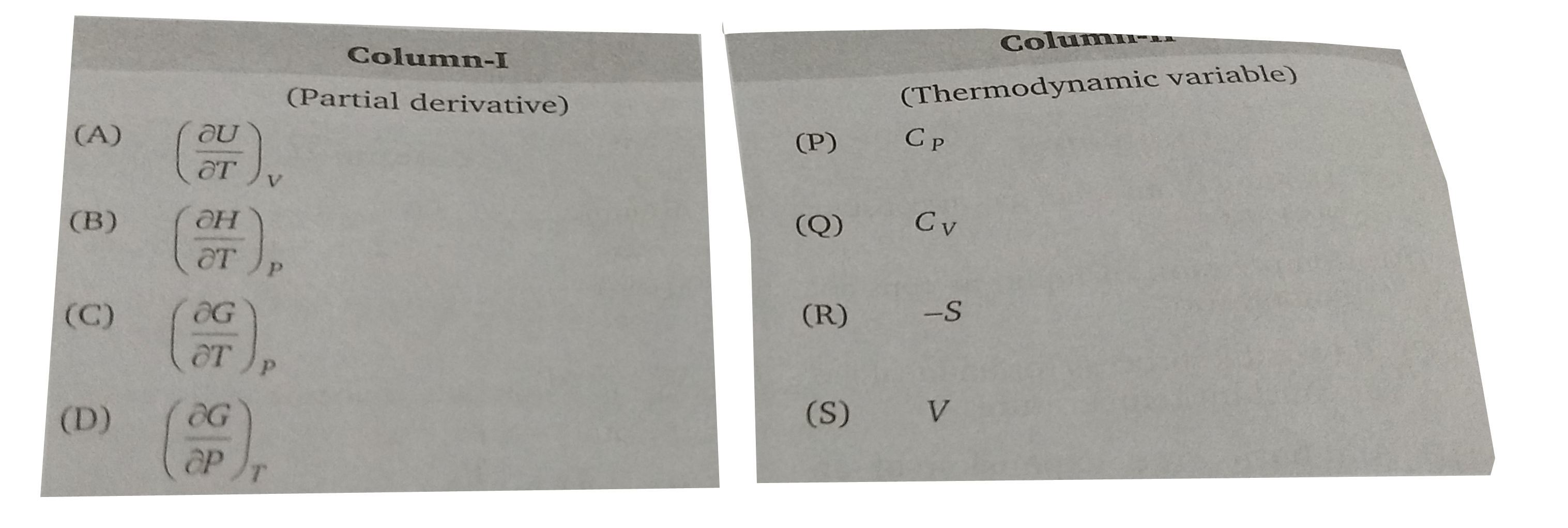STATEMENT-1 : Equivalent volume of H2 is 11.2 L at 1 atm and 273 K.
STATEMENT-2 : 1/2mole H2 has produced when 1 mole of H+ (aq) accepted 1 mole of e−.Solution in Telugu
If both the statement are TRUE and STATEMENT -2 is the correct explanation of STATEMENT-1
If both the statement are TRUE but STATEMENT-2 is NOT the correct explanation of STATEMENT-1
If STATEMENT- is 1 TRUE and STATEMENT-2 is FALSE
If STATEMENT-1 is FALSE and STATEMENT-2 is TRUE
The correct Answer is:A
Step by step video & image solution for STATEMENT-1 : Equivalent volume of H_(2) is 11.2 L at 1 atm and 273 K. STATEMENT-2 : 1//2mole H_(2) has produced when 1 mole of H^(+) (aq) accepted 1 mole of e^(-). by Chemistry experts to help you in doubts & scoring excellent marks in Class 11 exams.
Updated on:21/07/2023Topper's Solved these Questions
- STOICHIOMETRYBOOK - NARENDRA AWASTHICHAPTER - STOICHIOMETRYEXERCISE - Level 3 - Subjective Problems
20 Videos
- STOICHIOMETRYBOOK - NARENDRA AWASTHICHAPTER - STOICHIOMETRYEXERCISE - Match the Colum-II
3 Videos
- SOLID STATEBOOK - NARENDRA AWASTHICHAPTER - SOLID STATEEXERCISE - Level 3 - Subjective Problems
1 Videos
- THERMODYNAMICSBOOK - NARENDRA AWASTHICHAPTER - THERMODYNAMICSEXERCISE - Level 3 - Match The Column
2 Videos
Similar Questions
What volume of a liquid (in L) will contain 10 mole ? If molar mass of liquid is 280 and its density is 1.4 g/mL.
View Solution
View SolutionIonic solid Na+A− crystallise in rock salt type structure . 2.592 gm of ionic solid salt NaA dissolved in water to make 2 litre solution . The pH of this solution is 8. If distance between cation anion is 300 pm . Calculate the density of ionic solid (Pkw=13 Pka=13)
View SolutionMatch the following columns

View SolutionThe integral enthalpy of solution in kJ of one mole of H_(2)SO_(4) dissolved in n mole of water is given by : DeltaH_(s)=(75.6xxn)/(n+1.8) Calculate DeltaH for the following processes : (a) 1 mole of H_(2)SO_(4) dissolved in 2 mole of H_(2)O . (b) 1 mole of H_(2)SO_(4) dissolved in 7 mole of H_(2)O . (c ) 1 mole of H_(2)SO_(4) dissolved in 5 mole of H_(2)O . (d) solution (a) dissolved in 5 mole of H_(2)O . (e) 1 mole of H_(2)SO_(4) dissolved in excess of H_(2)O .
View SolutionWhat should be the number of moles of H_(2) in 0.224 L of H_(2)(g) at STP(273 K,1 atm) ? Assume the gas to behave ideally.
View SolutionThe third virial coefficient of He gas is 4xx10^(-2)(L//"mol")^(2) , then what will be volume of 2 mole He gas at 1 atm and 273 K?
View SolutionSTATEMENT-1 : Equivalent volume of H2 is 11.2 L at 1 atm and 273 K.
STATEMENT-2 : 1/2mole H2 has produced when 1 mole of H+ (aq) accepted 1 mole of e−.
View SolutionThe number of moles of H2 in 0.224 L of hydrogen gas a STP (273 K, 1 atm) assuming ideal gas behaviour is
View SolutionCalculate entropy change H_(2) O(l, 1 atm , 100 ^(@)) to H_(2)O(g, 1 atm , 110^(@)) H_(2) O(l, 1 atm , 100 ^(@)) to H_(2)O(g, 2 atm , 100^(@)) DeltaH_(vap)=40kJ//"mole" " " C_(p)(l)=75J//"mole"//K " " C_(p)(g)=35 J//"mole"//K
View SolutionOrder of increasing of entropy ammong given condition of substance is : (I) 1 mole of H_(2)O(I) at 298 K and 0.101 M pa (II) 1 mole of ice at 273 K and 0.101 M Pa (III) 1 mole of H_(2)(g) at 298 K and 1 atm (IV) 1 mole of C_(2)H_(6)(g) at 398 K abd 1 atm
View SolutionStatement-1: Complete hydrolysis of one mole of peroxydisulphuric acid gives one mole of H_(2)O_(2) and moles of H_(2)SO_(4) . Statement-2: Peroxydisulphuric acid has one peroxy linkage.
View SolutionVolume of 0.5 mole of a gas at 1 atm. Pressure and 273 K is
View SolutionWhen 22.4 litres of H_(2) (g) is mixed with 11.2 litres of Cl_(2) (g), each at 273 K at 1 atm the moles of HCl (g). formed is equal to
View SolutionThe standard enthalpies of formation of H2O2(l)andH2O(l) are −187.8kJmole−1and−285.8kJmole−1 respectively. The ΔH0 for the decomposition of one mole of H2O2(l) toH2O(l)andO2(g) is
View SolutionThe standard enthalpies of formation of H2O2(l)andH2O(l) are −187.8kJmole−1and−285.8kJmole−1 respectively. The ΔH0 for the decomposition of one mole of H2O2(l) to H2O(l)andO2(g) is
View Solution
